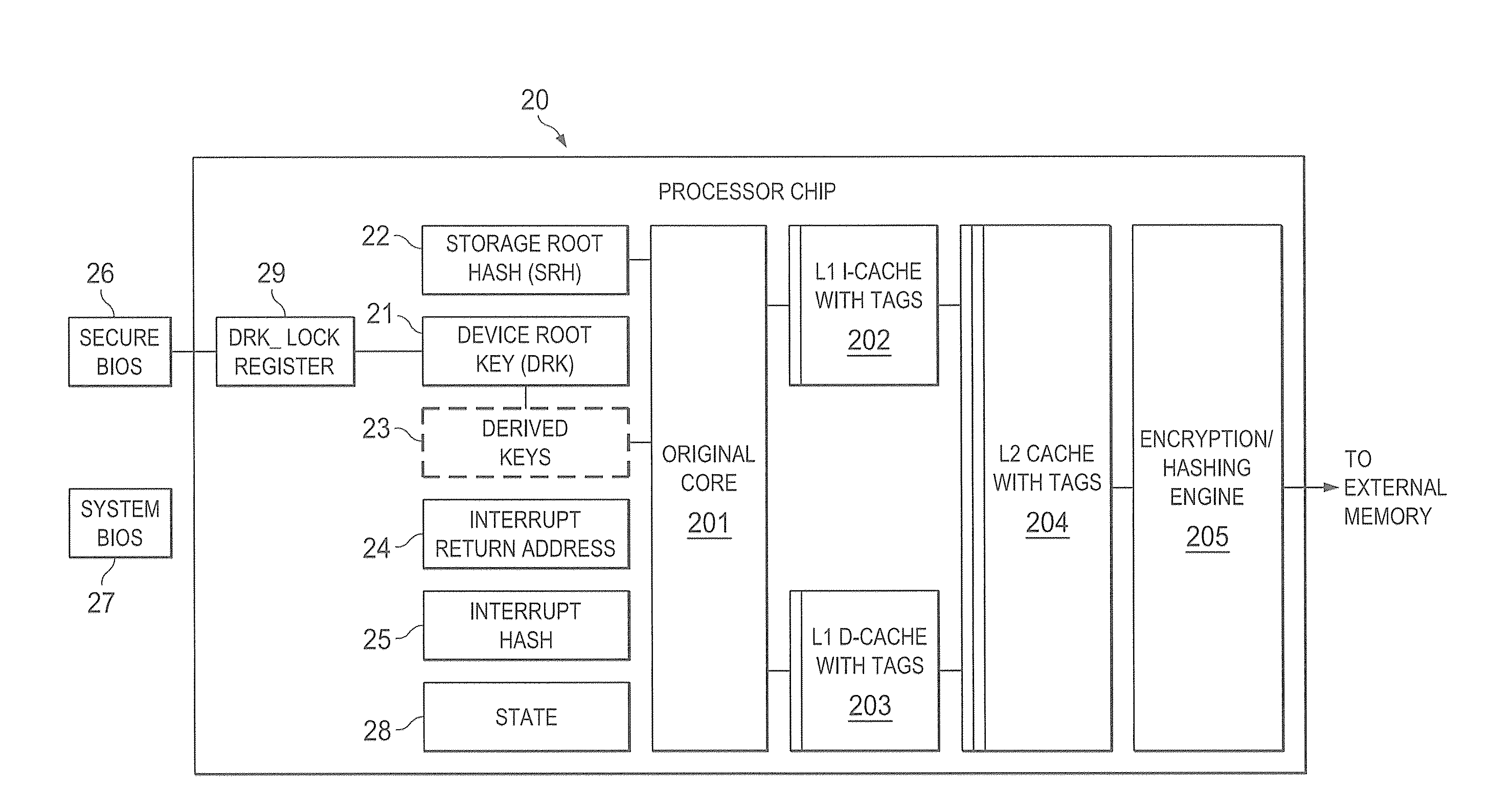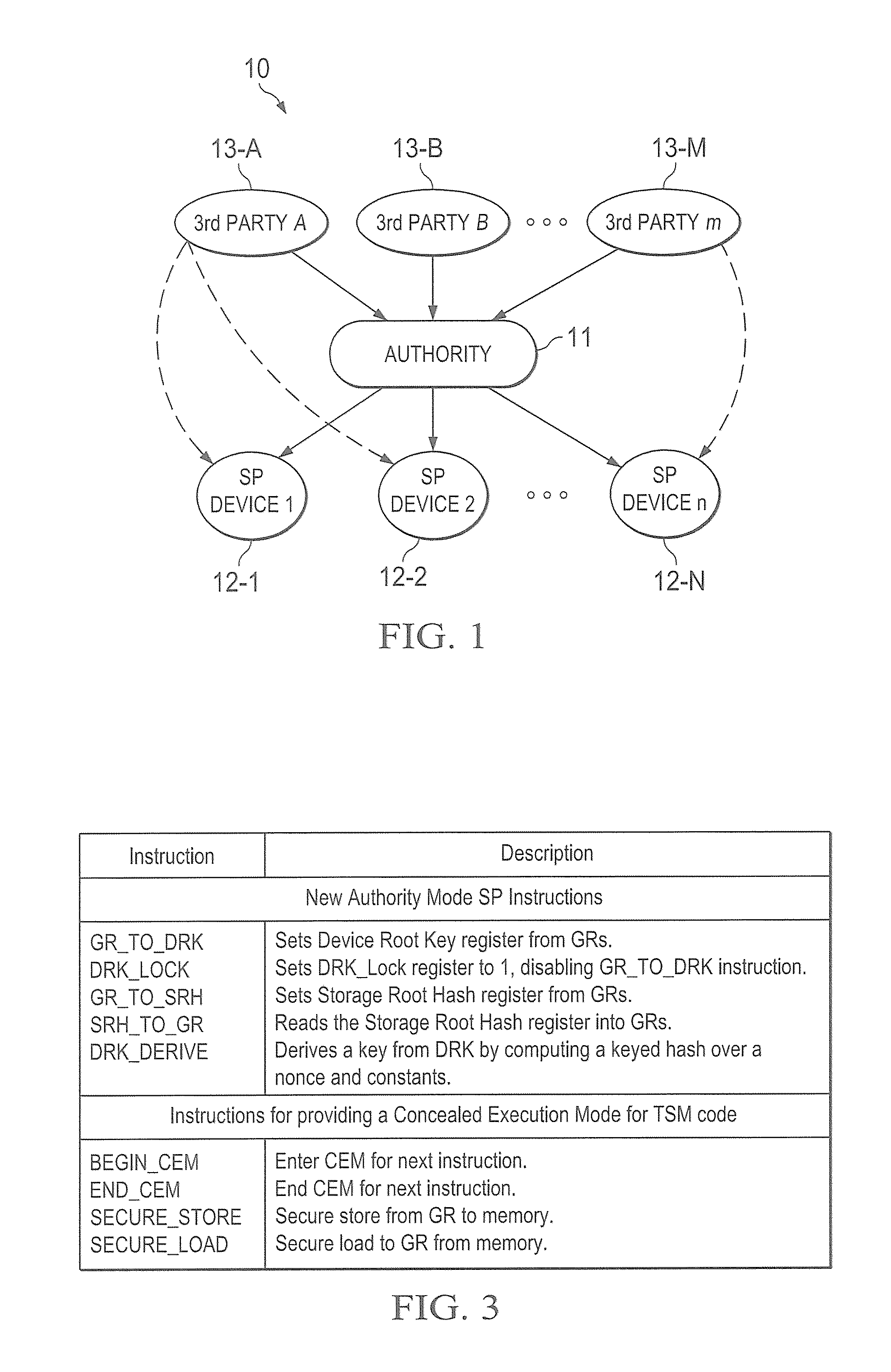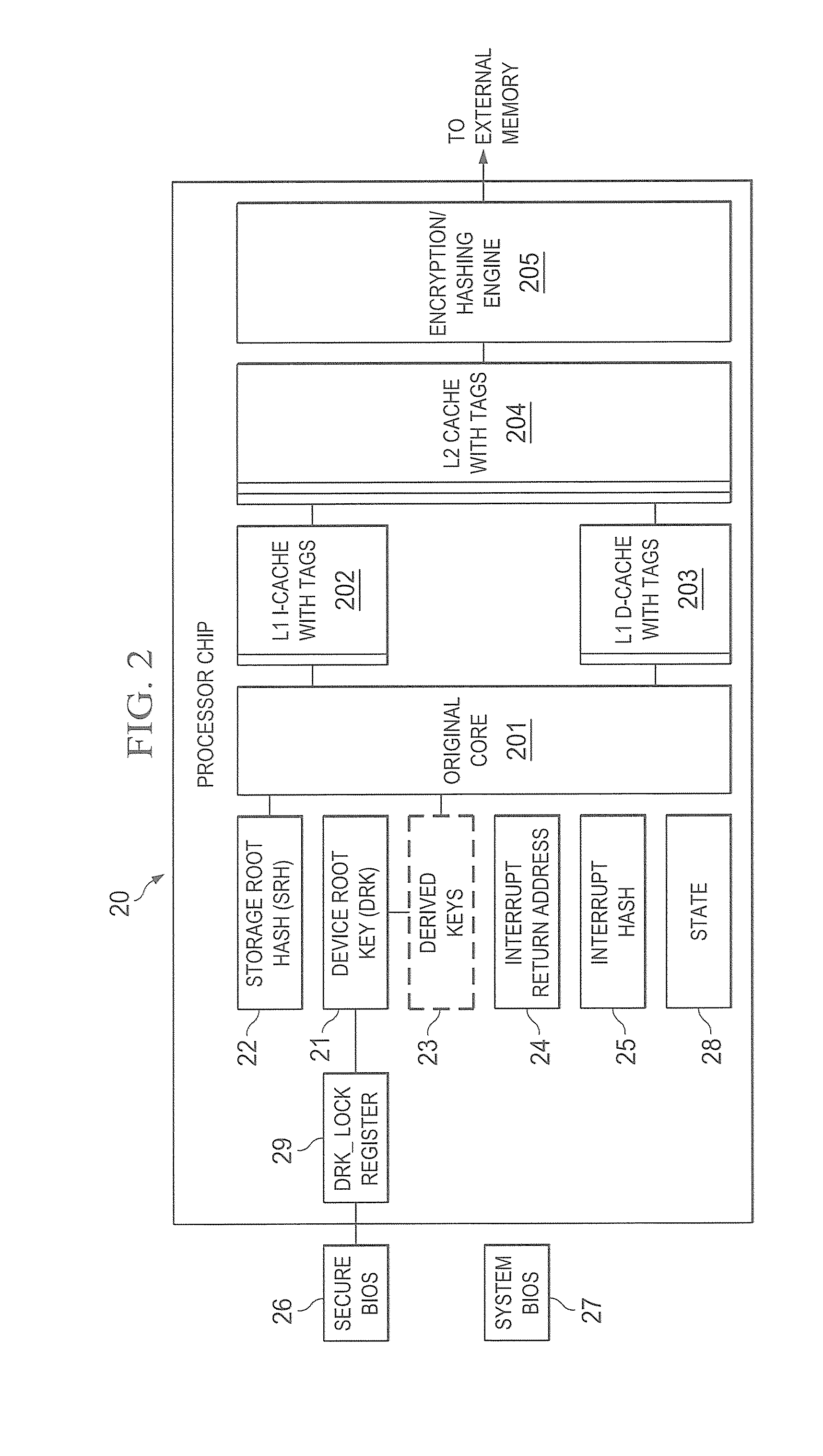Hardware trust anchors in sp-enabled processors
a technology of hardware trust and processors, applied in the direction of program control, unauthorized memory use protection, instruments, etc., can solve the problems of difficult management of security problems, difficult to achieve high level of trust, and compromise the operating system
- Summary
- Abstract
- Description
- Claims
- Application Information
AI Technical Summary
Benefits of technology
Problems solved by technology
Method used
Image
Examples
Embodiment Construction
[0034]FIG. 1 shows one embodiment of a system, such as system 10, in which trusted Authority 11 is in secure communication with devices 12-1 to 12-N. In a preferred embodiment, devices 12-1 to 12-N are portable devices but the concepts discussed herein can be used whether or not one or more of devices 12-1 to 12-N are portable or permanently located. Also shown in FIG. 1, are third parties, such as third parties 13-A to 13-M, who can communicate sensitive information to one or more of devices 12-1 to 12-N either through Authority 11 or directly with a high degree of trust that the information will remain secure and not be compromised or intercepted (and able to be interpreted or understood if intercepted) during transmission. Note that the concepts discussed herein will work whether or not any of parties 13-A to 13-M are present.
[0035]In the embodiment shown, Authority 11 owns or controls devices 12-1 through 12-N and, as will be discussed, establishes a trust relationship with each...
PUM
 Login to View More
Login to View More Abstract
Description
Claims
Application Information
 Login to View More
Login to View More - R&D
- Intellectual Property
- Life Sciences
- Materials
- Tech Scout
- Unparalleled Data Quality
- Higher Quality Content
- 60% Fewer Hallucinations
Browse by: Latest US Patents, China's latest patents, Technical Efficacy Thesaurus, Application Domain, Technology Topic, Popular Technical Reports.
© 2025 PatSnap. All rights reserved.Legal|Privacy policy|Modern Slavery Act Transparency Statement|Sitemap|About US| Contact US: help@patsnap.com



